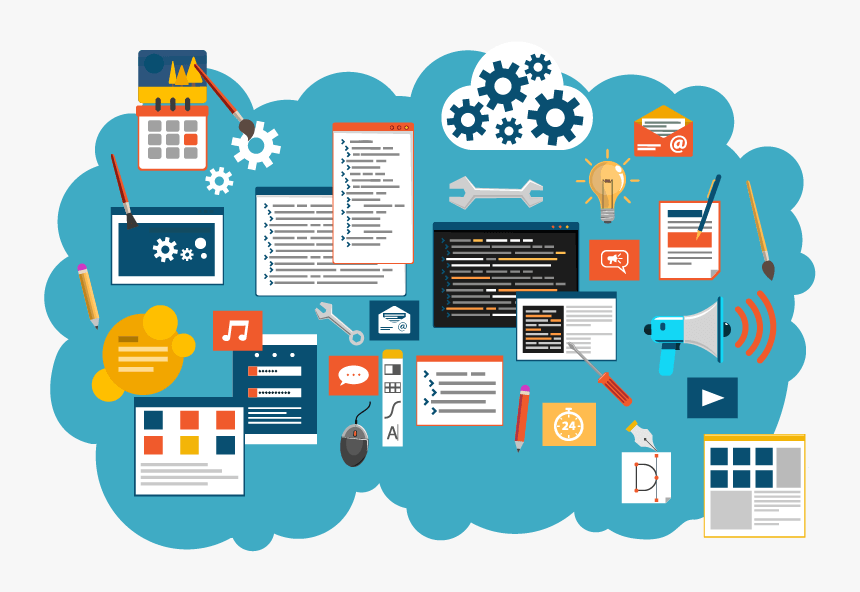What is modernization for old and legacy software?
Modernization of old and legacy software refers to the process of updating or upgrading outdated software systems to more current technology and architecture. This typically involves replacing or enhancing outdated hardware, software components, and data formats with new and improved versions. The goal of modernization is to improve the performance, security, reliability, and overall functionality of the software, as well as to bring it in line with current industry standards and technology.
Modernization often involves re-architecting the software to take advantage of cloud computing, big data, mobile devices, and other modern technologies. This can help organizations to reduce costs, increase productivity, and provide a better user experience for their customers. Modernization can also help organizations to better integrate their systems with other software and technologies, which can lead to improved collaboration and business processes.

Benefits of modernization
There are several benefits to modernizing old and legacy software, including:
- Improved performance: Modern software is often faster and more efficient than older software, allowing for improved processing and data access times.
- Increased security: Modern software typically includes built-in security features and updates to protect against the latest threats and vulnerabilities.
- Better scalability: Modern software is designed to handle large amounts of data and accommodate growth, making it easier to expand your business and respond to changing demands.
- Enhanced user experience: Modern software often provides a more intuitive and user-friendly interface, which can improve user satisfaction and overall productivity.
- Increased reliability: Modern software is less prone to crashes, bugs, and other technical issues, leading to fewer downtime and less frustration for users.
- Better integration: Modern software can often better integrate with other systems, enabling smoother and more seamless collaboration between different departments and systems.
- Cost savings: By reducing downtime, improving efficiency, and reducing the need for manual workarounds, modernization can help to lower overall costs and improve the bottom line.
- Competitive advantage: By having more modern and efficient systems in place, organizations can improve their competitiveness and better serve their customers.
How to do it?
Here are the general steps for modernizing old and legacy software:
- Assessment: Start by evaluating the current state of your software, including its architecture, hardware, software components, and data formats. Identify the strengths and weaknesses of your system and determine what needs to be updated.
- Planning: Develop a plan for modernizing your software, including a timeline, budget, and detailed project specifications. Consider the impact of the modernization on your users, stakeholders, and business processes.
- Selection of new technology: Choose the new hardware, software components, and data formats that you will use to replace your old system. Ensure that the new technology is compatible with your existing systems and meets your business requirements.
- Re-architecting: Refactor or re-architect your software to take advantage of new technology, improve performance, and meet modern standards. Consider using cloud computing, big data, mobile devices, and other modern technologies to improve the scalability and functionality of your system.
- Testing: Thoroughly test the updated software to ensure that it meets your expectations and that there are no major bugs or issues.
- Deployment: Deploy the modernized software to your users, making sure that they have received proper training and that there is adequate support in place to help with any transition issues.
- Maintenance: Regularly update and maintain the modernized software to keep it current and secure, and address any issues that arise.
These steps can vary depending on the specifics of your software, but they provide a general framework for modernizing old and legacy software. It is important to work with experienced software professionals to ensure that the modernization process is successful and that the new system meets your business needs.
Financial gains
Modernizing old and legacy software can result in significant financial gains for organizations. By improving the performance, security, reliability, and functionality of their software, organizations can reduce downtime, improve efficiency, and increase productivity. This can lead to lower overall costs and a more competitive edge in the market.
For example, modernizing an outdated software system can help to reduce manual workarounds, freeing up time for employees to focus on other tasks. This can increase productivity and reduce the need for additional staffing, leading to cost savings. Additionally, modernizing software can also help to improve the user experience, reducing frustration and increasing customer satisfaction. This can lead to improved customer loyalty and higher revenue over time.
In the long term, modernizing software can also help organizations to keep pace with changing technology and stay competitive in the market. By having up-to-date systems in place, organizations can better serve their customers, expand their business, and stay ahead of the curve. All of these factors can contribute to significant financial gains and a more successful and sustainable business.
Final thoughts
In conclusion, modernizing old and legacy software is an important investment for organizations looking to improve their performance, security, and competitiveness. By updating their software systems to take advantage of new technology and modern architecture, organizations can reduce costs, increase efficiency, and provide a better user experience.
My recommendation for organizations looking to modernize their software is to start with a thorough assessment of their current systems and a clear plan for the modernization process. It is also important to work with experienced software professionals to ensure that the new systems meet your business needs and are deployed and maintained successfully.
Another important consideration is to budget for ongoing maintenance and updates to the modernized software, as technology continues to evolve and new threats emerge. Regular software updates can help to keep the systems secure and performant over the long term.
In short, modernizing old and legacy software can bring many benefits to organizations, including improved performance, security, and competitiveness. With careful planning and execution, this investment can result in a more successful and sustainable business.
If you’re looking to modernize your old and legacy software and need professional assistance, we’re here to help! Our team of experienced software experts can provide comprehensive modernization services, including assessment, planning, technology selection, re-architecting, testing, deployment, and maintenance.
We understand the challenges of updating old software systems and are committed to working with you to develop a customized solution that meets your specific business needs. Our team has extensive experience with a variety of software systems and technologies, and we use this expertise to ensure a smooth and successful modernization process.
To learn more about how we can help you modernize your software, please feel free to contact us. Our team is available to answer any questions you may have and provide a free consultation to help you determine the best approach for your organization.
Don’t let outdated software hold you back. Contact us today to learn how we can help you modernize your systems and stay ahead of the curve.

